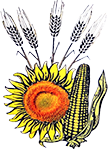Bioeconomic Effects of Transforming Family Husbandry in to Modern Farms in Buzău Montan Area
Marcel Theodor Paraschivescu, Laurențiu Ciornei, Mariana Sandu, Amalia Geanina Străteanu
Centrul de Studii și Cercetări de Biodiversitate Agrosilvică "Acad. David Davidescu", București
Keywords: livestock biodiversity, bioeconomy, family husbandry, modern farms, Buzău Montan.
Abstract: Bioeconomy is a techno-scientific and logical policy especially for agricultural development. We can talk about production activities and the transformation of bioresources into foodstuffs, molecules, materials, energy and ecosystem services, the priority area being agriculture. Livestock farming is a basic component of the bioeconomy, producing raw materials for the food industry in particular and for light industry.
The development trend in human society is to maintain population growth by extending the average life expectancy of people with a decreasing share of the population in rural areas.
Hence the need to further increase labor productivity in animal husbandry, which can be achieved by promoting intensive farming systems. The advantages of these systems result from the saving of land usable for agro-cultures and good labor productivity through genetic improvement of livestock.
The average total number of head of bovine during 2018-2022 for the montan area of the county was 7.373 head. The average total number of head of sheep for the period 2018-2022 for the county's montan area was 49.207 head. The average total number of head of goats for the period 2018-2022 for the county's montan area was 7.004 head. The average total number of head of pigs for the period 2018-2022 for the montan area of the county was 6.436 head.
The zoo-cultural systems specific to the Buzau Montan area are represented by the rearing of domestic animals on pastures and family husbandry.
The transformation of family husbandry in to modern farms has a bio-economic effect, as they comply with the principles of sustainable development of an area by promoting natural values in a sustainable or minimally invasive way, using the local labor force, developing zoo-cultural biodiversity and achieving economic development of the area with a positive impact on the living conditions of the local people.
